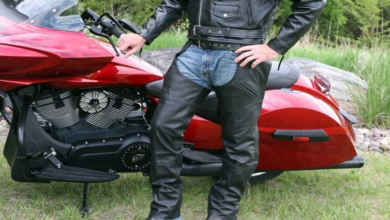What is the Difference between a Reflex Action and Walking: Everything You Need to Know?

A reflex action is an involuntary, instant response to a stimulus, whereas walking is a voluntary, coordinated movement. Reflex actions, such as jerking a hand away from a hot surface, occur without conscious thought, while walking involves conscious coordination of muscles.
For several reasons, understanding the difference between a reflex action and voluntary movements like walking is crucial. Reflex actions are quick, automatic responses that protect us from harm, requiring no conscious input. These responses are hardwired into the nervous system and are essential for survival.
On the other hand, walking is a purposeful action that involves planning and coordination, engaging multiple muscle groups and neural pathways. It’s a complex motor skill humans learn in early childhood and refine throughout their lives. Unlike reflex actions, the processes involved in walking allow for adaptability and improvement. Identifying these differences sheds light on how our bodies manoeuvre and interact with the surrounding environment, offering insights into human physiology and neurology.
Contents
Introduction To Reflex Actions And Walking
How our bodies move and react tells a story of complex biological processes. Two fundamental behaviours – reflex actions and walking – highlight this intricacy. Reflex actions are immediate while walking is a learned motor skill. Comparing these allows us to appreciate the marvel of human movement.
The Basics Of Reflex Actions
Reflex actions are our body’s rapid involuntary responses. They protect us from harm. A simple example is the quick withdrawal of a hand from a hot surface.
This process involves three key components: a sensory organ, a nerve pathway, and a muscle or gland.
- The sensory organ detects a stimulus.
- The nerve pathway transmits the signal to the spinal cord.
- Muscles or glands execute the quick response.
This pathway, known as the reflex arc, bypasses the brain for speed.
A Primer On Walking As A Motor Skill
Walking is a coordinated effort. Our brain, nerves, and muscles create this balanced movement. It’s a motor skill that babies learn over time. Unlike in reflex actions, the brain plays a crucial role here.
Critical stages in mastering walking include:
- Crawling, developing strength and coordination.
- Standing, gaining balance.
- Walking, coordinating steps and balance.
This development transforms a simple reflex into a complex, learned behaviour.
The Science Of Reflex Actions
The science of reflex actions is a fascinating study of how our bodies react without us thinking. When you touch something hot and pull your hand away quickly, that’s a reflex action. It’s much faster than regular actions like walking. Let’s dive into the science behind these involuntary responses.
Involuntary Response Mechanisms
Reflex actions are involuntary, meaning they happen without you deciding to do them. Your body has built-in reactions to certain events. When these reactions occur, your muscles move without your brain deciding.
- Instantaneous: They occur in a fraction of a second.
- Protective: Reflexes often protect us from harm.
- Consistent: They happen the same way each time.
The Role Of The Nervous System
Your nervous system controls reflex actions and sends signals at high speed. This network includes your brain, spinal cord, and nerves. The spinal cord plays a significant role in reflex actions. Let’s see how.
| Process | Description |
| Sensory Input | The body senses a stimulus. |
| Signal to Spinal Cord | Nerves send signals to the spinal cord quickly. |
| Reflex Arc | The spinal cord processes and sends back a response. |
| Muscle Reaction | Muscles move based on the spinal cord’s response. |
Decoding Walking
Decoding Walking: Walking is an everyday activity we might take for granted, but it’s a fascinating dance of the human body. Unlike reflex actions that occur without thought, walking is a complex process. Let’s unpack the intricate steps our bodies take with each stride.
A Complex, Learned Behavior
Walking doesn’t happen overnight. It’s a skill we learn over time, improving as we grow. Babies crawl before they walk. This learning phase involves trial and error. Through practice, walking becomes a seamless activity. We don’t just walk; we master walking.
- Infancy: Crawling, standing, and taking the first steps.
- Toddlerhood: Developing balance and coordination.
- Adulthood: Efficient, balanced gait.
Neurological And Muscular Coordination
Every step is a symphony of our nervous system and muscles working harmoniously. Our brain sends signals through nerves to muscles, telling them to contract and move. This coordination keeps us upright and walks us forward.
| Component | Function |
| Brain | Processes and initiates movement. |
| Spinal Cord | Transmits signals. |
| Leg Muscles | Support and propel the body. |
With each step, the brain fine-tunes the movement. This ensures we can navigate different terrains. Whether on a flat surface or climbing stairs, our walking pattern adjusts. This adaptability is critical to our mobility.
Differences In Neural Pathways
Understanding how our bodies move can be fascinating. Let’s examine the differences between reflex action and walking. Both involve the nervous system but travel through different paths in the body. These paths are like roads for signals, each with unique stops and destinations.
The Path Of Reflex Signals
Reflexes are quick responses to certain stimuli. They do not involve the brain. Instead, they rely on a simple neural pathway called the reflex arc.
- Stimulus detected by sensory receptors.
- The message travels along a sensory neuron to the spinal cord.
- An interneuron in the spinal cord processes the information.
- The motor neuron responds, activating muscles or glands.
This short path allows reflexes to be swift and automatic.
The circuitry involved in walking
The Circuitry Involved In Walking
Walking is different. It is a complex movement controlled by the brain. Here is how walking works:
- The brain sends a signal to move.
- This signal travels down the spinal cord.
- It reaches motor neurons that control leg muscles.
- The legs move in a coordinated pattern.
Walking uses a network of neurons, including the motor cortex, basal ganglia, cerebellum, and brainstem.
This complex circuit integrates balance, coordination, and adaptive Control. It allows for voluntary and rhythmic motions.
Speed Of Response
Understanding the speed of response in human actions is vital. It varies widely between reflex actions and walking. Reflexes and walking serve different functions in our bodies. Let’s explore the key differences, focusing on their response speeds.
Instantaneous Reactions In Reflexes
Reflex actions occur swiftly and involuntarily. They are our body’s rapid responses to certain stimuli, and the speed is crucial for our survival. For example, touching a hot surface triggers an automatic withdrawal of the hand.
- Typical reflex response time: 0.1 to 0.2 seconds.
- They are managed by the spinal cord, not the brain.
These reactions are hardwired into our nervous system. They bypass the brain for a faster response. Below is a glimpse of how quickly various reflexes work:
| Reflex Action | Response Time (Approx.) |
| Blink Reflex | 0.1 seconds |
| Patellar Reflex | 0.2 seconds |
Walking: A Paced, Rhythmic Motion
Walking involves more deliberate, controlled movements. It is a complex process that coordinates the brain, muscles, and limbs. The response time for initiating walking is less immediate than with reflexes.
- Initiation of walking: several seconds to plan and execute.
- The brain’s command controls it.
Walking can vary in speed depending on the person and circumstance but generally follows a steady, controlled rhythm. Factors such as muscle strength, coordination, and environment affect walking speed:
| Factor | Influence on Walking Speed |
| Muscle Strength | Stronger muscles can increase the pace. |
| Coordination | Better coordination can lead to smoother steps. |
| Environment | Obstacles can slow down the walking pace. |
Conscious Control
Conscious Control is pivotal in how our bodies respond to the environment. While some actions happen without a thought, such as pulling your hand away from a hot stove, others, like walking, involve a complex dance between the brain and body where conscious Control is in charge.
Reflex Actions: Beyond Conscious Control
Reflex actions occur swiftly and without conscious thought. They protect us from harm by responding faster than our conscious minds can. For instance:
- Touching a hot object triggers an immediate hand withdrawal.
- The pupil reflex adjusts the amount of light entering the eyes.
- The knee-jerk reaction is a classic example of a reflex seen during medical check-ups.
These actions are handled by the spinal cord or lower brain regions, not requiring the brain’s conscious effort. They are necessary for survival and occur without deliberation.
Conscious Adjustments In Walking
Walking, in contrast, involves conscious Control and adjustment. The brain actively participates in:
- Planning our route. We think about where we want to go.
- Balancing to remain upright while moving.
- Adapting stride and pace based on the terrain or obstacles.
As we walk, our brains constantly make conscious decisions to navigate our world smoothly. Walking reflects a blend of voluntary movements and learned patterns, showcasing the body’s unique ability to combine automatic processes with conscious Control.
Functional Purpose
The functional purpose of reflex actions and walking differ significantly. Reflexes are automatic, occurring without thought while walking is a conscious movement. Both serve essential functions in our everyday lives. Let’s explore these functions with regard to protection and activity.
Reflexes As Protective Responses
Reflexes act as the body’s rapid defence system. They protect us from danger without delay. This instant reaction prevents injuries and prepares the body for quick escapes from harm. For instance:
- The blink reflex shields the eyes from foreign objects.
- The cough reflex clears the throat of blockages.
- The gag reflex prevents choking.
Walking As A Functional And Purposeful Activity
Walking stands out as a deliberate action. It allows us to navigate our environment. This activity involves coordination, balance, and muscle work. Here are its essential purposes:
| Function | Purpose |
| Transportation | Moving from one location to another |
| Exercise | Improving cardiovascular health |
| Recreation | Enjoying the environment and relaxation |
To walk, the brain plans and executes each step. This involves conscious decision-making, unlike the automatic nature of reflexes.
Adaptation And Learning
Understanding Adaptation and Learning is crucial when comparing a reflex action to walking. Reflex actions happen automatically without us thinking. Walking is different. We learn to walk. Our bodies and brains work together to get better at walking over time.
Lack Of Adaptation In Reflexes
Reflex actions are quick and do not change. They are our body’s instant reactions to certain stimuli. For example, when we touch a hot stove, we immediately pull back our hands. This happens every time. Our bodies do not adapt or learn from it. Reflexes are built-in to protect us.
Walking: A Skill Refined Over Time
Walking is a complex skill. We start to learn this skill when we are babies. As we grow, we get better at walking. Our muscles, balance, and coordination improve. Think about toddlers. They often fall when they are learning to walk. Over time, they fall less and walk with ease. This is because their bodies learn and adapt. The learning process involves:
- Practice: Repeating the walking motion makes it smoother.
- Muscle memory: Our muscles remember how to move correctly.
- Balance and coordination: These improve as walking becomes more natural.
Each step we take becomes more steady and confident. This is due to learning and adapting, which differs from an unchanging reflex action.
Implications In Health And Medicine
The human body performs diverse functions, many crucial for daily life.
Understanding the difference between a reflex action and voluntary movements like walking is essential in health and medicine.
Assessment Of Reflexes In Medical Diagnostics
Doctors check reflexes to ensure the nervous system works well.
- Knee-jerk responses show nerve health.
- Blink reflexes protect the eyes and show brain function.
These tests help find diseases or nerve damage.
| Reflex | Normal Response | Potential Condition if Abnormal |
| Babinski | Toes down | Brain or spinal cord issues |
| Patellar | Leg kick | Nerve damage or injury |
Gait Analysis And Rehabilitation
Gait analysis helps analyze walking patterns.
It is used to plan treatment for people with walking difficulties.
- Track steps and movements
- Spot problems in the leg or back
- Design exercises or therapies
Health experts use this information to improve walking and help people move better.
With gait analysis, recovery becomes faster and more effective.
Final Thoughts
Now that we’ve delved into the intricacies of reflex actions and walking let’s crystallize our understanding and give you some final thoughts.
Summing Up The Key Differences
- Reflex actions are quick, involuntary responses to stimuli.
- Walking, on the other hand, is a complex, coordinated movement.
- Reflexes do not involve the brain while walking is brain-directed.
- A reflex can save us from harm, while walking gets us where to go.
The Significance Of Understanding Reflex Actions And Walking
Grasping the differences between reflex actions and walking is more than an exercise in biology. It sheds light on how our bodies work and keep us safe. Walking shows how we navigate and interact with the world. By understanding both, we appreciate the wonders of human movement and the sophistication of our nervous system.
| Reflex Action | Walking |
| Involuntary | Voluntary |
| Instantaneous | Deliberate |
| It doesn’t require brain | Needs brain |
Conclusion
Understanding the distinction between reflex actions and walking illuminates the complexities of human biology. Reflexes are involuntary and quick while walking is a rhythmical, controlled process. Grasping these concepts enriches our knowledge and can help us recognize signs of neurological health.



